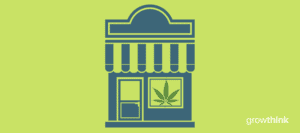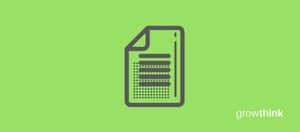Landscaping businesses run the gamut from one-person lawn care services to huge companies with dozens of locations. As long as people and businesses have lawns, there will always be work, yet many landscapers fail in the first year, often due to haphazard and unsustainable growth. A written business plan can help you avoid this trap by delineating a clear road map for organized growth. In addition, if you plan to seek outside funding, your business plan is essential to convincing investors or lenders to take a chance on your company.
Over the past 20+ years, we have helped over 2,000 entrepreneurs create business plans to start and grow their landscaping companies. On this page, we will first give you some background information with regards to the importance of business planning. We will then go through a landscaping business plan step-by-step so you can create your plan today.
What is a Landscaping Business Plan?
A business plan provides a snapshot of your landscaping business as it stands today, and lays out your growth plan for the next five years. It explains your business goals and your strategy for reaching them. It also includes market research to support your plans.
Why You Need a Business Plan for a Landscaping Company
If you’re looking to start a landscaping business or grow your existing landscaping business you need a business plan. A business plan will help you raise funding, if needed, and plan out the growth of your landscaping business in order to improve your chances of success. Your landscaping business plan is a living document that should be updated annually as your company grows and changes.
Source of Funding for Landscaping Businesses
With regards to funding, the main sources of funding for a landscaping company are personal savings, credit cards, bank loans and angel investors. With regards to bank loans, banks will want to review your business plan and gain confidence that you will be able to repay your loan and interest. To acquire this confidence, the loan officer will not only want to confirm that your financials are reasonable. But they will want to see a professional plan. Such a plan will give them the confidence that you can successfully and professionally operate a business.
The second most common form of funding for a landscaping company is angel investors. Angel investors are wealthy individuals who will write you a check. They will either take equity in return for their funding, or, like a bank, they will give you a loan.
Finish Your Business Plan Today!
If you’d like to quickly and easily complete your business plan, download Growthink’s Ultimate Landscaping Business Plan Template and complete your plan and financial model in hours.
How to Write a Business Plan for a Landscaping Company
Your business plan should include 10 sections as follows:
Executive Summary
Your executive summary provides an introduction to your business plan, but it is normally the last section you write because it provides a summary of each key section of your plan.
The goal of your Executive Summary is to quickly engage the reader. Explain to them the type of landscaping company you are operating and the status; for example, are you a startup, do you have a landscaping business that you would like to grow, or are you operating a chain of landscaping companies.
Next, provide an overview of each of the subsequent sections of your plan. For example, give a brief overview of the landscaping industry. Discuss the type of landscaping company you are operating. Detail your direct competitors. Give an overview of your target customers. Provide a snapshot of your marketing plan. Identify the key members of your team. And offer an overview of your financial plan.
Company Analysis
In your company analysis, you will detail the type of landscaping company you are operating.
For example, you might operate one of the following types:
- Commercial: this type of landscaping company provides services to commercial facilities, municipal buildings, and campuses. This type of business provides lawn maintenance, as well as tree and shrub services and exterior landscaping installation.
- Residential: this type of landscaping company typically focuses on lawn maintenance for households and multifamily properties.
- Landscape design: this type of landscaping company includes the construction of embankments, terraces and retaining walls used in landscape structures, in addition to walkways, decks, fences, ponds and similar structures.
- Arborist services: Arborists undertake the cultivation and management of individual trees or trees within a small area, as opposed to similar professionals in the forestry industries. Arborist services also include tree felling and surgery.
In addition to explaining the type of landscaping company you operate, the Company Analysis section of your business plan needs to provide background on the business.
Include answers to question such as:
- When and why did you start the business?
- What milestones have you achieved to date? Milestones could include sales goals you’ve reached, new store openings, etc.
- Your legal structure. Are you incorporated as an S-Corp? An LLC? A sole proprietorship? Explain your legal structure here.
Industry Analysis
In your industry analysis, you need to provide an overview of the landscaping company.
While this may seem unnecessary, it serves multiple purposes.
First, researching the landscaping industry educates you. It helps you understand the market in which you are operating.
Secondly, market research can improve your strategy particularly if your research identifies market trends. For example, if there was a trend towards residential outdoor kitchens, it would be helpful to ensure your plan calls for employing plenty of skilled labor.
The third reason for market research is to prove to readers that you are an expert in your industry. By conducting the research and presenting it in your plan, you achieve just that.
The following questions should be answered in the industry analysis section of your landscaping business plan:
- How big is the landscaping industry (in dollars)?
- Is the market declining or increasing?
- Who are the key competitors in the market?
- Who are the key suppliers in the market?
- What trends are affecting the industry?
- What is the industry’s growth forecast over the next 5 – 10 years?
- What is the relevant market size? That is, how big is the potential market for your landscaping company. You can extrapolate such a figure by assessing the size of the market in the entire country and then applying that figure to your local population.
Customer Analysis
The customer analysis section of your lawn care business plan must detail the customers you serve and/or expect to serve.
The following are examples of customer segments: families, baby boomers, businesses, etc.
As you can imagine, the customer segment(s) you choose will have a great impact on the type of landscaping company you operate. Clearly baby boomers would want different pricing and product options, and would respond to different marketing promotions than businesses.
Try to break out your target customers in terms of their demographic and psychographic profiles. With regards to demographics, include a discussion of the ages, genders, locations and income levels of the customers you seek to serve. Because most landscaping companies primarily serve customers living in their same city or town, such demographic information is easy to find on government websites.
Psychographic profiles explain the wants and needs of your target customers. The more you can understand and define these needs, the better you will do in attracting and retaining your customers.
Finish Your Landscaping Business Plan in 1 Day!
Don’t you wish there was a faster, easier way to finish your business plan?
With Growthink’s Ultimate Landscaping Business Plan Template you can finish your plan in just 8 hours or less!
Click here to finish your Landscaping business plan today.
Competitive Analysis
Your competitive analysis should identify the indirect and direct competitors your business faces and then focus on the latter.
Direct competitors are other landscaping businesses.
Indirect competitors are other options that customers have to choose from that aren’t direct competitors. This includes DIY platforms such as TaskRabbit, or doing the landscaping themselves. You need to mention such competition to show you understand that not everyone uses a landscaping business for lawn maintenance.
With regards to direct competition, you want to detail the other landscaping businesses with which you compete. Most likely, your direct competitors will be landscaping businesses located very close to your location.
For each such competitor, provide an overview of their businesses and document their strengths and weaknesses. Unless you once worked at your competitors’ businesses, it will be impossible to know everything about them. But you should be able to find out key things about them such as:
- What types of customers do they serve?
- What products/services do they offer?
- What is their pricing (premium, low, etc.)?
- What are they good at?
- What are their weaknesses?
With regards to the last two questions, think about your answers from the customers’ perspective. And don’t be afraid to ask your competitors’ customers what they like most and least about them.
The final part of your competitive analysis section is to document your areas of competitive advantage. For example:
- Will you provide superior landscaping services?
- Will you provide landscaping services that your competitors don’t offer?
- Will you make it easier or faster for customers to schedule your services?
- Will you provide better customer service?
- Will you offer better pricing?
Think about ways you will outperform your competition and document them in this section of your plan.
Marketing Plan
Traditionally, a marketing plan includes the four P’s: Product, Price, Place, and Promotion. For a lawn care business plan, your marketing plan should include the following:
Product: in the product section you should reiterate the type of landscaping business that you documented in your Company Analysis. Then, detail the specific products you will be offering. For example, in addition to mowing and trimming lawns, will you offer services such as insect and weed control?
Price: Document the prices you will offer and how they compare to your competitors. Essentially in the product and price sub-sections of your marketing plan, you are presenting the services you offer and their prices.
Place: Place refers to the location of your landscaping business. Document your location and mention how the location will impact your success. For example, is your landscaping business located near a garden supply store, or greenhouse, etc. Discuss how your location might provide a steady stream of customers.
Promotions: the final part of your landscaping business marketing plan is the promotions section. Here you will document how you will drive customers to your location(s). The following are some promotional methods you might consider:
- Advertising in local papers and magazines
- Reaching out to local bloggers and websites
- Pay per click advertising
- Flyers
- Local radio advertising
- Banner ads at local venues
Finish Your Business Plan Today!
If you’d like to quickly and easily complete your business plan, download Growthink’s Ultimate Landscaping Business Plan Template and complete your plan and financial model in hours.
Operations Plan
While the earlier sections of your lawn care business plan explained your goals, your operations plan describes how you will meet them. Your operations plan should have two distinct sections as follows.
Everyday short-term processes include all of the tasks involved in running your landscaping business such as serving customers, procuring supplies, keeping the equipment maintained, etc.
Long-term goals are the milestones you hope to achieve. These could include the dates when you expect to serve your 100th customer, or when you hope to reach $X in sales. It could also be when you expect to hire your Xth employee or launch in a new city.
Management Team
To demonstrate your landscaping business’s ability to succeed as a business, a strong management team is essential. Highlight your key players’ backgrounds, emphasizing those skills and experiences that prove their ability to grow a company.
Ideally you and/or your team members have direct experience in the landscaping business. If so, highlight this experience and expertise. But also highlight any experience that you think will help your business succeed.
If your team is lacking, consider assembling an advisory board. An advisory board would include 2 to 8 individuals who would act like mentors to your business. They would help answer questions and provide strategic guidance. If needed, look for advisory board members with experience in landscaping businesses and/or successfully running retail and small businesses.
Financial Plan
Your financial plan should include your 5-year financial statement broken out both monthly or quarterly for the first year and then annually. Your financial statements include your income statement, balance sheet and cash flow statements.
Income Statement: an income statement is more commonly called a Profit and Loss statement or P&L. It shows your revenues and then subtracts your costs to show whether you turned a profit or not.
In developing your income statement, you need to devise assumptions. For example, will you serve 100 customers per week or 200? And will sales grow by 2% or 10% per year? As you can imagine, your choice of assumptions will greatly impact the financial forecasts for your business. As much as possible, conduct research to try to root your assumptions in reality.
Balance Sheets: While balance sheets include much information, to simplify them to the key items you need to know about, balance sheets show your assets and liabilities. For instance, if you spend $100,000 on building out your landscaping business (purchasing equipment, etc.), that will not give you immediate profits. Rather it is an asset that will hopefully help you generate profits for years to come. Likewise, if a bank writes you a check for $100.000, you don’t need to pay it back immediately. Rather, that is a liability you will pay back over time.
Cash Flow Statement: Your cash flow statement will help determine how much money you need to start or grow your business, and make sure you never run out of money. What most entrepreneurs and business owners don’t realize is that you can turn a profit but run out of money and go bankrupt. For example, let’s say a homeowner approached you with a $50,000 hardscaping contract, that would cost you $25,000 to fulfill. Well, in most cases, you would have to pay that $25,000 now for supplies, equipment rentals, employee salaries, etc. But let’s say the client didn’t pay you for 180 days. During that 180 day period, you could run out of money.
In developing your Income Statement and Balance Sheets be sure to include several of the key costs needed in starting or growing a landscaping business:
- Cost of equipment like mowers, trailers, weed trimmers, clippers, etc.
- Cost of maintaining an adequate amount of supplies (i.e. bug and weed killer, etc.)
- Payroll or salaries paid to staff
- Business insurance
- Taxes and permits
- Legal expenses
Appendix
Attach your full financial projections in the appendix of your plan along with any supporting documents that make your plan more compelling. For example, you might include your store design blueprint or location lease.
Landscaping Business Plan Summary
Putting together a business plan for your landscaping business is a worthwhile endeavor. If you follow the template above, by the time you are done, you will truly be an expert. You will really understand the landscaping business, your competition and your customers. You will have developed a solid lawn care business plan and will really understand what it takes to launch and grow a successful landscaping business.
Download Our Landscaping Business Plan PDF
You can download our lawn care business plan example pdf here. This is a business plan template you can use in PDF format to help you get started on your own business plan.
Finish Your Landscaping Business Plan in 1 Day!
Don’t you wish there was a faster, easier way to finish your Landscaping business plan?
With Growthink’s Ultimate Landscaping Business Plan Template you can finish your plan in just 8 hours or less!
Click here to finish your Landscaping business plan today.
OR, Let Us Develop Your Plan For You
Since 1999, Growthink has developed business plans for thousands of companies who have gone on to achieve tremendous success.
Click here to hire someone to write a business plan for you from Growthink’s team.





 Download a Free Business Plan Template
Download a Free Business Plan Template How to Make a Successful Business Plan
How to Make a Successful Business Plan 100 Sample Business Plans
100 Sample Business Plans Business Plan for Dispensary
Business Plan for Dispensary The Perfect Business Plan Layout for a Great Plan
The Perfect Business Plan Layout for a Great Plan Use This Business Plan Structure to Expertly Write Your Plan
Use This Business Plan Structure to Expertly Write Your Plan Commercial Cultivation Business Plan
Commercial Cultivation Business Plan Farm Business Plan
Farm Business Plan Greenhouse Business Plan
Greenhouse Business Plan Hemp Farm Business Plan
Hemp Farm Business Plan CBD Business Plan
CBD Business Plan Cannabis Cultivation Business Plan
Cannabis Cultivation Business Plan Architecture Business Plan
Architecture Business Plan Interior Design Business Plan
Interior Design Business Plan Service Business Plan
Service Business Plan